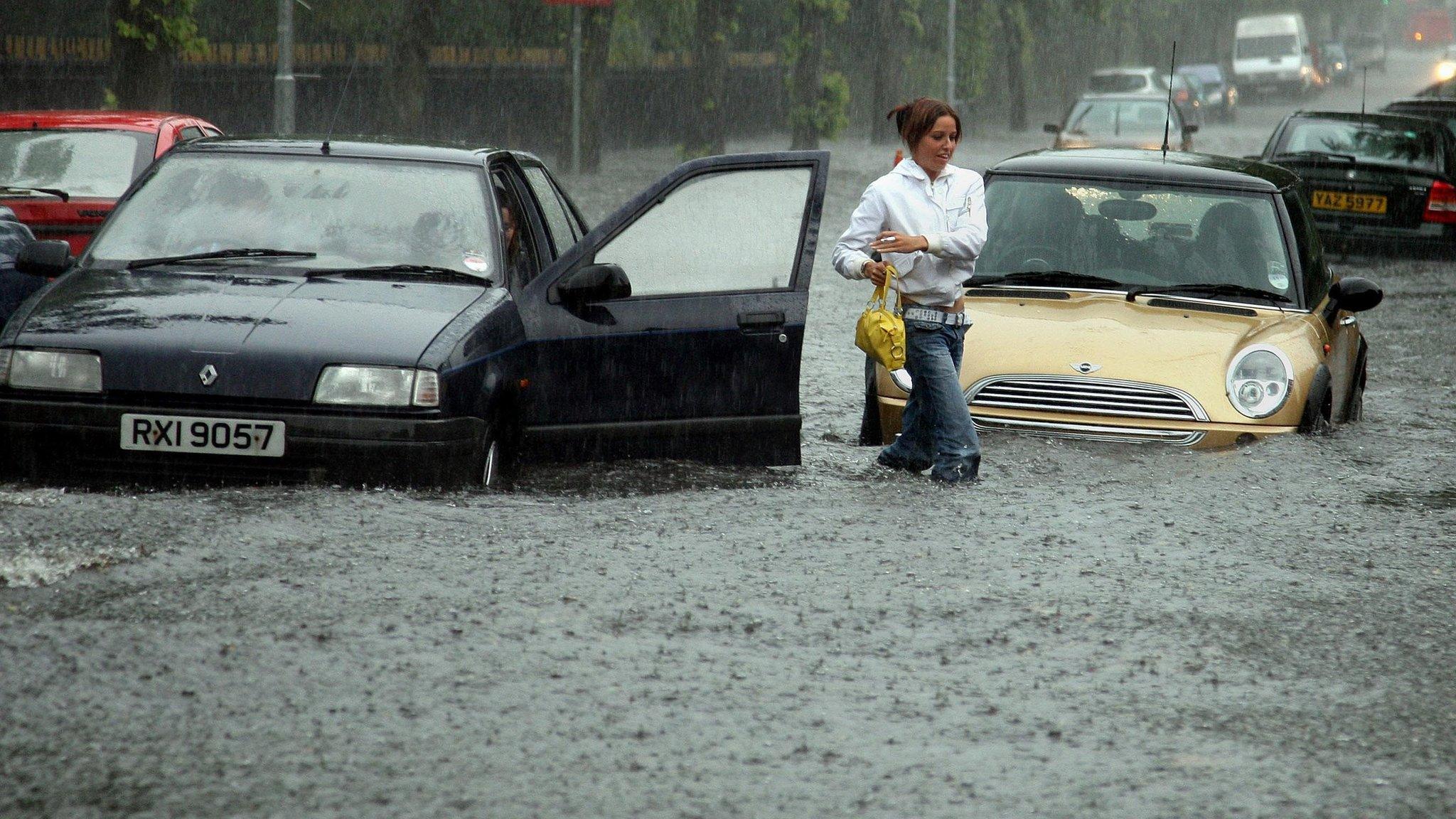Firefighters union in NI safety warning over job cuts
- Published
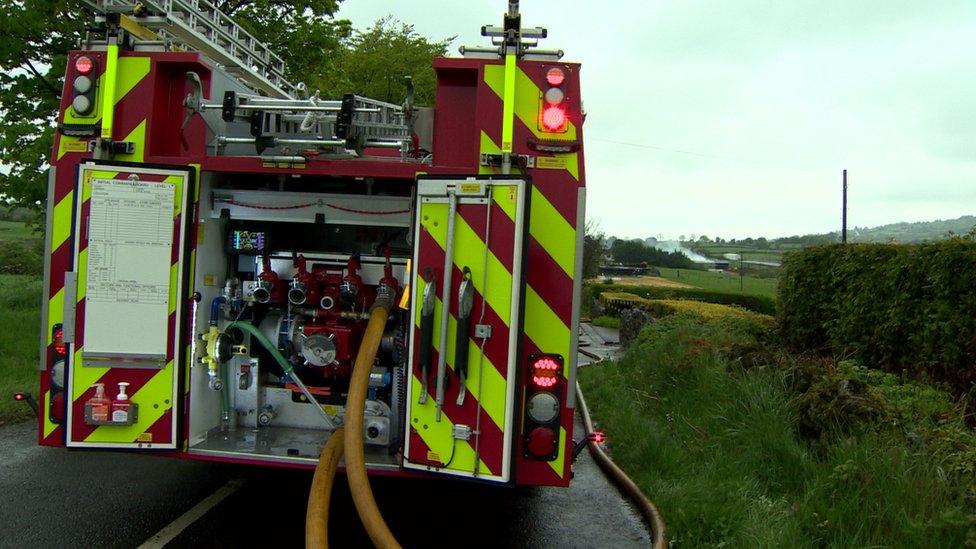
The total number of firefighters in NI has fallen by just over 10% since 2010
The "dwindling" number of firefighters in Northern Ireland is threatening their ability to respond to large-scale fires, a union has said.
The Fire Brigades Union (FBU) said numbers have fallen by 10% since 2010 and added that it "beggars belief" that further cuts are planned.
The Northern Ireland Fire and Rescue Service (NIFRS) conceded it has about 200 fewer fighters than it had in 2010.
But NIFRS insisted it would continue to provide a "safe and effective service".
Figures from the NIFRS show that in April 2010, there were a total of 1,943 firefighters in Northern Ireland, more than half of whom were part-time.
At the start of this week, the current total stands at 1,745, a decrease of 198 firefighters (or just over 10%) since 2010.
'A disgrace'
Jim Quinn from the FBU said that cuts to firefighter numbers in Northern Ireland during the past year had been "the worst in the UK".
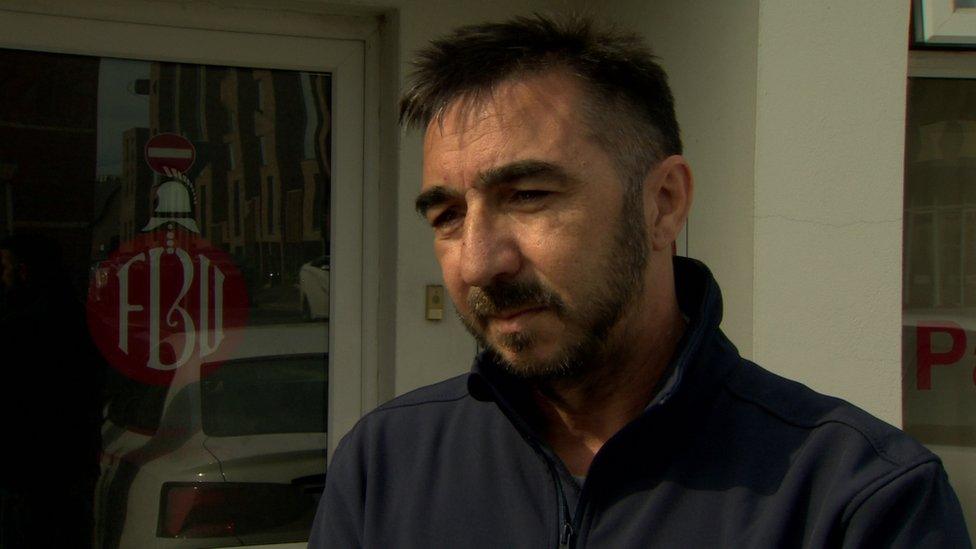
Jim Quinn from the union claimed cuts have threatened the ability to respond to large-scale fires
Using a Freedom of Information (FOI) request, the FBU said it had learned there were 82 fewer firefighters in Northern Ireland at the start of this financial this year compared to the year before, a cut of 4%.
The union compiled figures from fire authorities across the UK using "provisional headcount" figures on 31 March each year.
"England and Scotland have seen 1% and 3% increases in posts respectively, while Wales has had numbers reduced by 1%," said Jim Quinn, FBU executive council member for Northern Ireland.
"Why is it that Northern Ireland is seeing bigger reductions in firefighter numbers than the rest of the UK?" he asked.
"Lives here matter no less than they do in England, Scotland or Wales. It's a disgrace."
'No evidence'
Mr Quinn added that mountain wildfires and the huge blaze that destroyed Primark's Belfast store in August 2018 demonstrated "the vital need to mobilise quickly for a large-scale fire".
"With firefighter numbers dwindling, our ability to properly respond to these incidents is under threat," said the union representative.

NIFRS currently has the same number of firefighters as it had at the time of last year's Primark fire
But the NIFRS pointed out that the total strength of its firefighting workforce was exactly the same today (1,745) as it was at the time of the Primark fire last summer.
"It is unhelpful to suggest that NIFRS would not be in a position to respond to another incident on a similar scale and there is no evidence to support this assertion," said the interim Chief Fire and Rescue Officer Michael Graham.
Last month, BBC News NI reported that NIFRS was planning to cut crews to deal with budgetary pressures and that smaller towns were likely to be hit hardest.
Documents seen by the BBC said full-time fire cover would change to part-time in a number of locations, including Carrickfergus, Enniskillen and Armagh city.
'More flexible'
The service has been dealing with a £3.2m budget shortfall since the start of this financial year.
Mr Quinn claimed firefighters' ability to tackle fires, such as those in the Mournes, would be affected
The chief fire officer said the NIFRS was continuing "to manage all of our resources in a safe and effective way".
"This now includes NIFRS using operational personnel in a more flexible manner, which ensures that we continue to have the right number of firefighters, in the right place, at the right time, in line with risk," said Mr Graham in a statement responding to the union's concerns.
He added that 28 new firefighters would be joining the organisation by the end of September and, "budget permitting", there are plans to recruit another 28 before the end of this year.
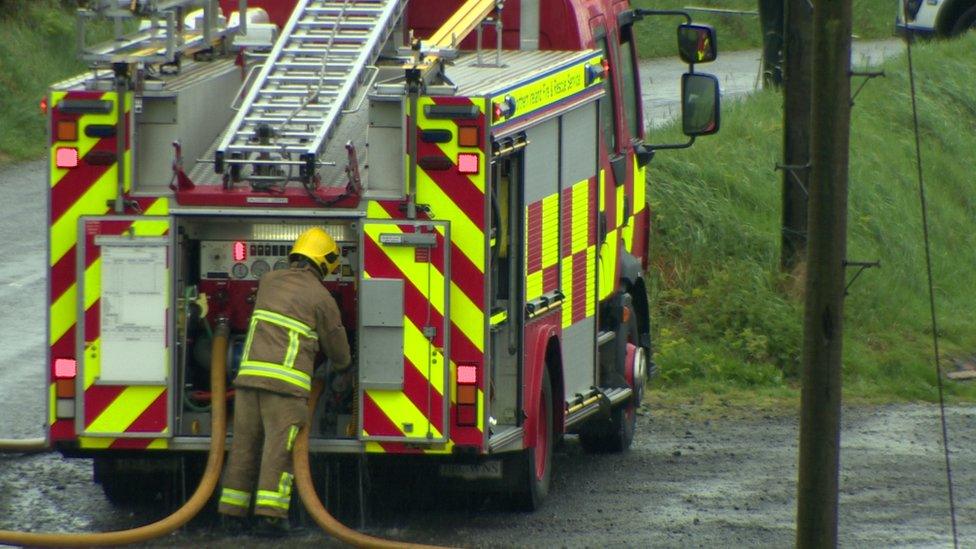
During 2018-19, the number of emergency calls handled by NIFRS increased by 5.6% on the previous year, to 38,511.
It also attended 24,586 incidents, up 2% on the previous year.
- Published2 August 2019
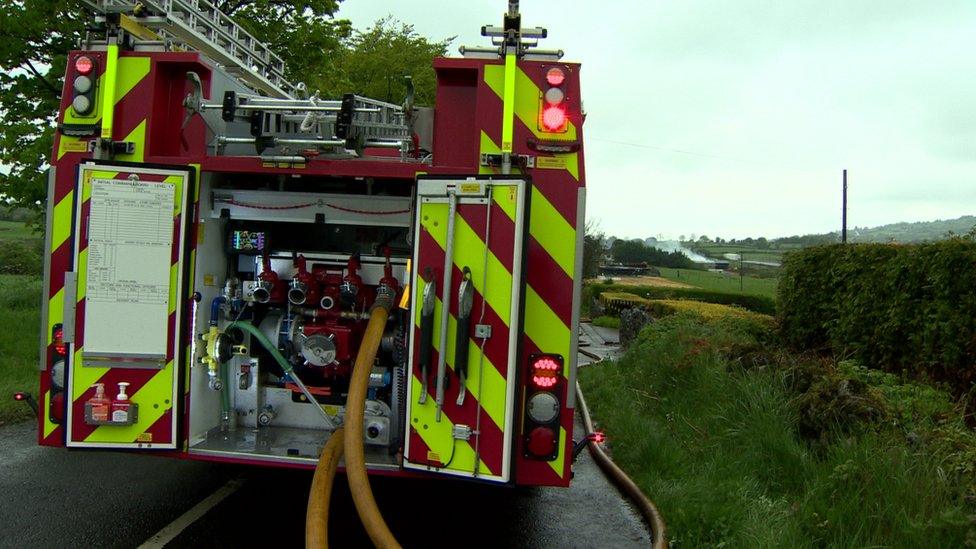
- Published11 February 2019
